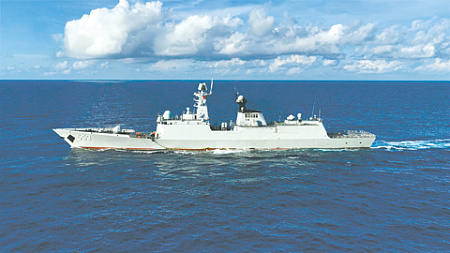
The United States and China have successfully concluded “frank and constructive” maritime security talks, marking a significant step towards de-escalating potential flashpoints in the Indo-Pacific. The Chinese Naval spokesman confirmed that Beijing has finally consented to regular military-to-military engagements, a long-sought objective for Washington. These crucial “working-level” discussions took place in Hawaii and represent the first such dialogue since Donald Trump’s re-election to the US presidency. Organized biannually by the US-China consultative working group, these meetings suggest that both geopolitical rivals have managed to find common ground on one of the most sensitive aspects of their bilateral relationship, aiming to avert accidental conflicts stemming from miscalculations by naval forces or aviators.
Beyond naval conduct, the discussions, as reported by Reuters, extended to the agreement that air force pilots from both nations would also exercise caution and professionalism during their operations. This commitment is particularly vital given the history of dangerous aerial maneuvers that have previously brought the two powers to the precipice of direct confrontation. A stark reminder of these perils is the 2001 incident involving a US spy plane, en route to surveil China’s air defenses, and a Chinese fighter jet. The collision resulted in the tragic death of the Chinese pilot, while the damaged American aircraft was forced to land on Chinese soil. Its entire crew was subsequently detained, and its advanced equipment meticulously examined by Chinese specialists. Following intense negotiations, both sides ultimately opted against escalating the incident, and the American crew was eventually repatriated.
Despite these recent diplomatic overtures, the geopolitical atmosphere over the South China Sea and the Taiwan Strait remains volatile. Beijing asserts historical claims over nearly all islands and shoals in the South China Sea, a stance consistently rejected by Washington, which continues to dispatch its naval vessels and military aircraft through these international waters as part of its freedom of navigation operations. This ongoing contestation creates a persistent source of friction and potential for unintended encounters.
The situation is arguably even more precarious in the Taiwan Strait. China regards Taiwan as an inalienable part of its territory and has legislated the use of force should the island declare independence. While Taiwan’s ruling Democratic Progressive Party maintains it has no intention of provoking Beijing by declaring independence, it remains steadfast in its resolve to defend the democratic institutions and way of life that have flourished on the island against any perceived encroachments from the mainland.
Militarily, the People’s Republic of China undeniably possesses overwhelming superiority over Taiwan. However, the United States has continued to supply Taiwan with advanced defensive weaponry designed to impose an exceptionally high cost on Beijing should it ever consider a military operation to “reunite” the island with the mainland. Speculation, primarily from Western and Japanese media outlets, has suggested a potential invasion timeline around 2027, coinciding with the 100th anniversary of the People’s Liberation Army. Nevertheless, these remain unconfirmed conjectures. Critical decisions concerning war and peace are meticulously deliberated and analyzed at the highest echelons of the Chinese Communist Party’s Politburo, a practice that has been rigorously observed since the passing of Mao Zedong.
It is crucial to note that while engaging in these maritime talks, the Chinese Navy issued a clarifying statement regarding the US-China discussions: “China firmly opposes all intrusions and provocations.” As Reuters highlighted, this phrase subtly but unequivocally points to Washington as the implied source of such provocations, signaling that China’s participation in de-escalation mechanisms does not equate to an endorsement of US military presence or actions in the region.
Notwithstanding these underlying tensions and China’s pointed caveats, President Trump chose to portray the agreement as a significant triumph. Commenting on his discussions with Chinese President Xi Jinping in South Korea, he declared the deal a “breakthrough into reality,” envisioning “brilliant prospects” for strengthening US-China relations, particularly highlighting the economic benefits for American farmers, especially those cultivating soybeans.
Trump’s emphasis on the economic gains aligns with broader evidence of deep financial interdependence between the two nations. Research from the College of William & Mary in Virginia revealed that US entrepreneurs have received an astonishing $200 billion in loans from Chinese state banks over the past quarter-century. This underscores that despite the fierce geopolitical competition and military posturing, the intricate web of economic ties continues to yield substantial dividends for the United States, providing a complex backdrop to the fragile détente playing out in the Indo-Pacific.
